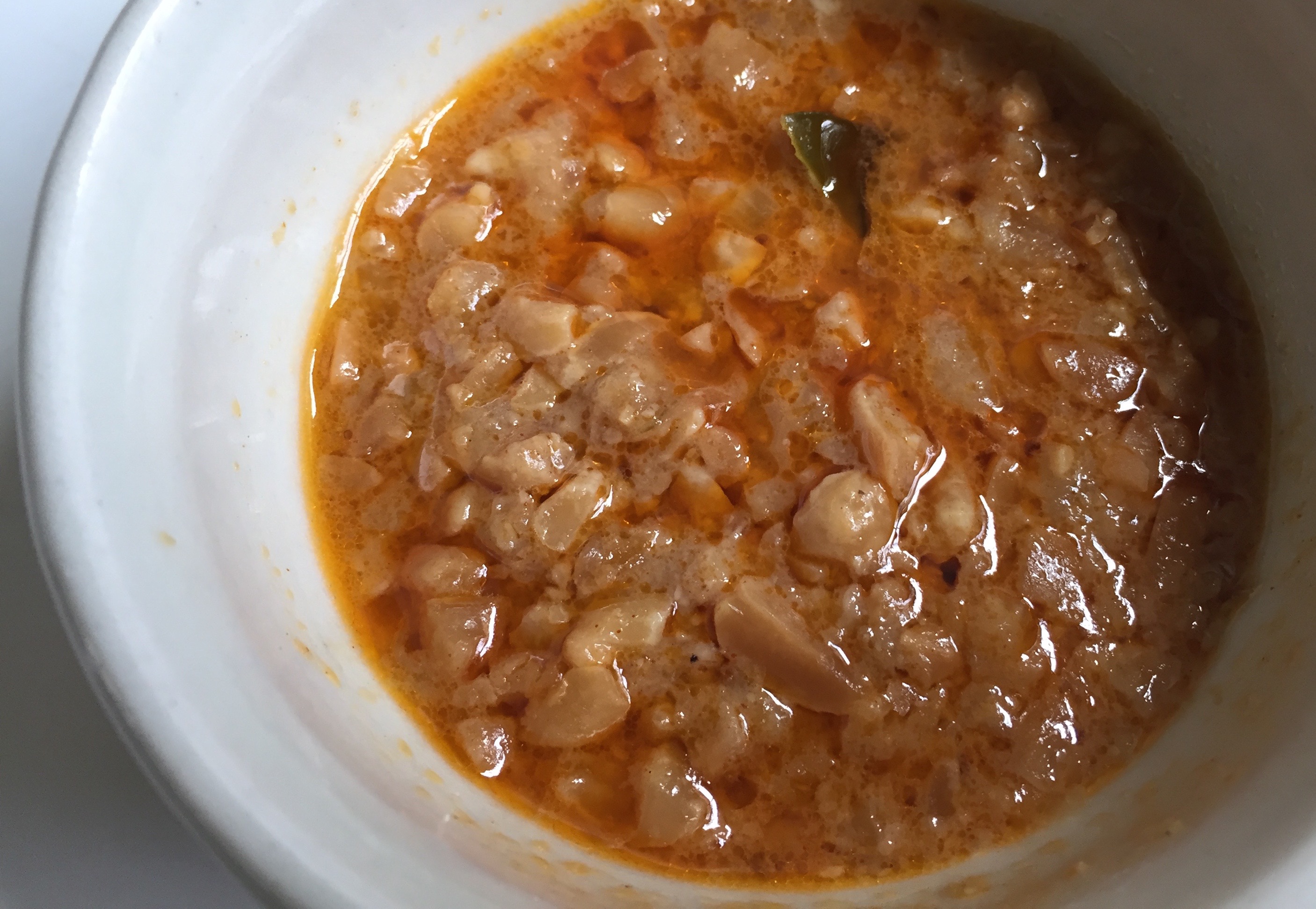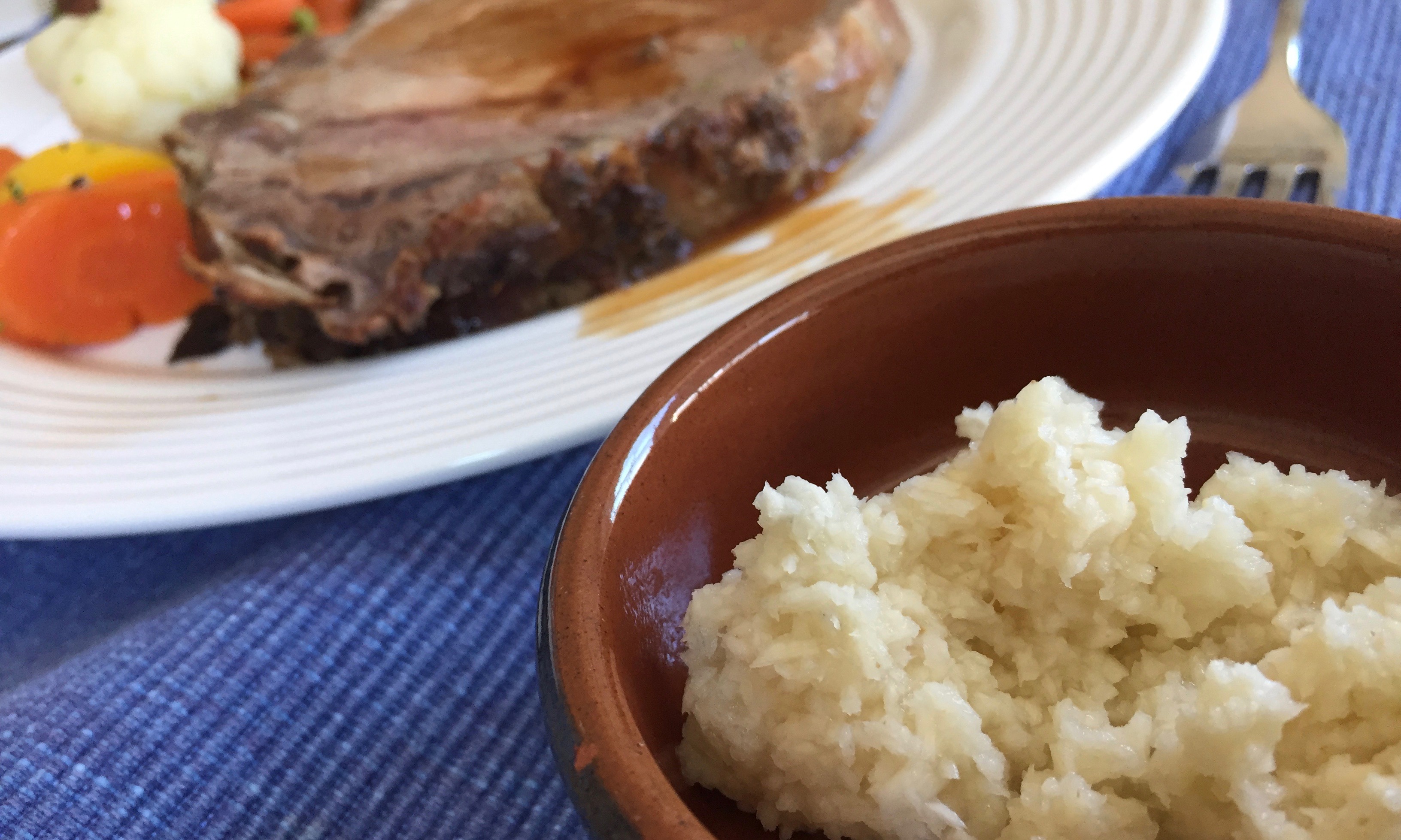
The traditional way to make Satay Sauce is to start making a paste by pounding in a mortar with pestle, say, 8 shallots, 4 cloves of garlic, the base of a stalk of lemon grass, 10 dried chili and 2 thin slices of galangal. Roughly, that’s just to start. Some cooks add belachan.
This blend of chili and other aromatics is called a rempah, which is the Malay equivalent of a mirepoix—the base of a flavorful sauce. Then you fry this rempah, s-l-o-w-ly, add coconut milk, soy sauce, sugar, tamarind, and peanut. Simmer this for about half an hour to make the satay sauce.
The fussing over this sauce is totally worth it because there is no other way to give it this full-bodied flavor. I’ve seen easier recipes to blend chili with coconut milk and peanut butter. They’re not the same.
Don’t panic. Here is my short cut way of doing it. You can make it authentically without pounding rempah by using Thai red curry paste which has the same root ingredients. Or you can use Sambal Belachan from Singapore or Malaysia, if you can find the authentic version of this paste. I found them in both the Great Wall Supermarket in Fairfax, Va, and in Good Fortune Supermarket in Eden Center, Seven Corners, Va.
My recipe starts with frying the onion with patience. Like making French onion soup, the trick is to brown the onion slowly and over medium low heat to bring out its sweetness without burning it. Then we add the other ingredients–red curry paste, coconut, and peanut.
Make this sauce ahead of time. The peanut thickens the sauce as it sits.

Satay Sauce
Makes 2 cups
Preparation time: 5 minutes
Cooking time: 45-60 minutes
2 tablespoons peanut oil
6 ounces onion, finely chopped
2 tablespoons Thai red curry paste
1 cup coconut milk
½ cups water
1 tablespoons soy sauce
1 tablespoons brown sugar
¾ cup roasted unsalted peanuts
1 teaspoon tamarind juice
In a 3-quart saucepan, heat half the oil until shimmering. Add onion and fry very quickly. Lower heat to medium and allow onion to cook gently, stirring often, until it becomes soft and almost golden, about 10 minutes. Remove onion from pan and set aside.
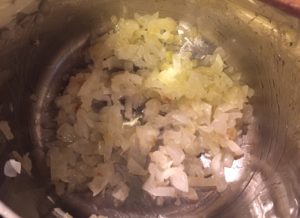
Return pan to heat, raise heat to high and add rest of oil. When oil is hot, add red curry paste and stir quickly to brown paste, lowering heat if necessary to prevent burning. Watch out for splatter.
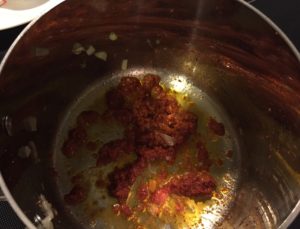
When paste and oil is well mixed and fragrant, return onion to pan, combine well and fry for another 3-5 minutes.
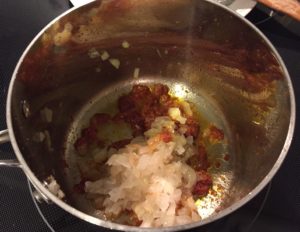
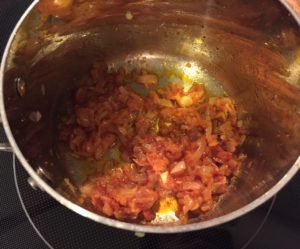
Add coconut milk and bring to a boil. Add water and bring it back up to a boil. Add soy sauce and sugar. Simmer on low for about 20 minutes.
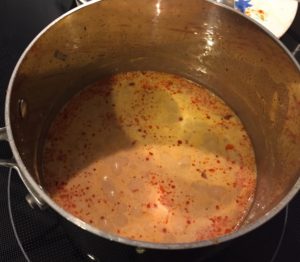
Meanwhile, place peanut in a plastic bag and roll with a rolling pin to crush peanut.
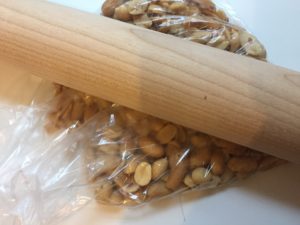
Add peanut and tamarind paste to simmering sauce. Stir periodically. Continue to simmer for another 15-20 minutes. Test taste, adjusting with soy sauce and sugar.

Set sauce aside to allow sauce to thicken.
NOTES
–When I cook this in a wok, I sometimes just push the onion aside to make a space to fry the red curry paste on its own. The trick is to make sure that the curry paste is fried well enough to bring out its oils and fragrance before mixing it with the onions.
What can go wrong: I’ve tried to take this easy (lazy) way out and do this in a saucepan but it can get tricky because the onions just gets in the way. This doesn’t allow the red curry paste to be well heated on its own to bring out its color. It still tasted good.
–The amount of coconut milk may be adjusted. You can use a cup of coconut, or a whole can of coconut, depending on how lemak (coconut-ty) you want the satay sauce. More coconut will make it more milky.
Once I only had a little leftover coconut milk in my freezer, maybe less than ¾ cup, and it still worked. The combination of onion, chili, coconut milk and peanut does its magic. Keep adjusting the taste to suit.
–If you make this ahead of time, and especially when refrigerated, the sauce will thicken. Add ¼ cup water to liquefy and heat up. Simmer slowly to allow the sauce to get to the consistency you like. Satay sauce should not be too watery; it should be thick enough to cling to the meat or chicken satay.
VARIATIONS
–Use an extra tablespoon of red curry paste if you prefer it spicy.
–Instead of tamarind paste, use the juice of half a lemon or lime.
–Add 2 pieces of kaffir leaves into sauce to give it added fragrance.
Glossary of Ingredients
Click here for more on:
